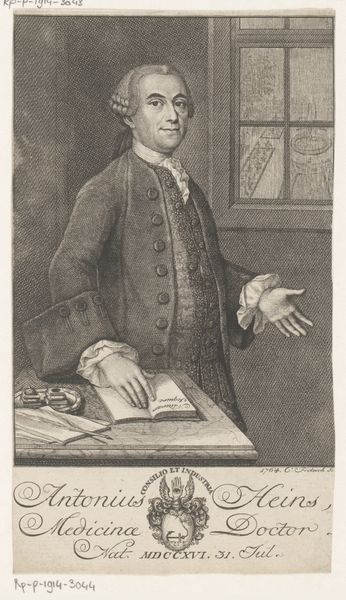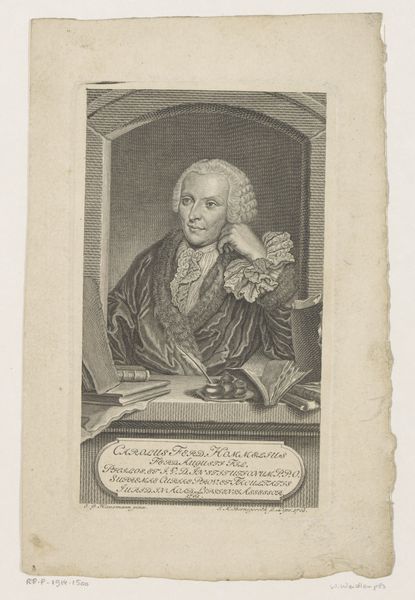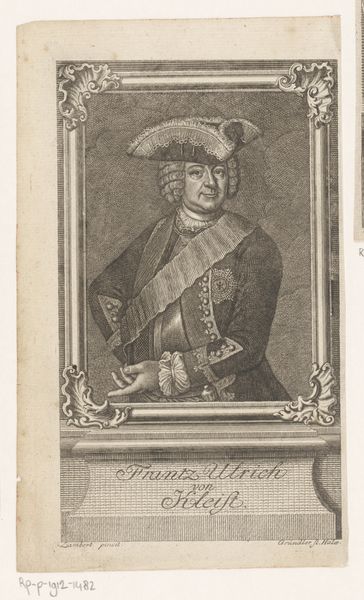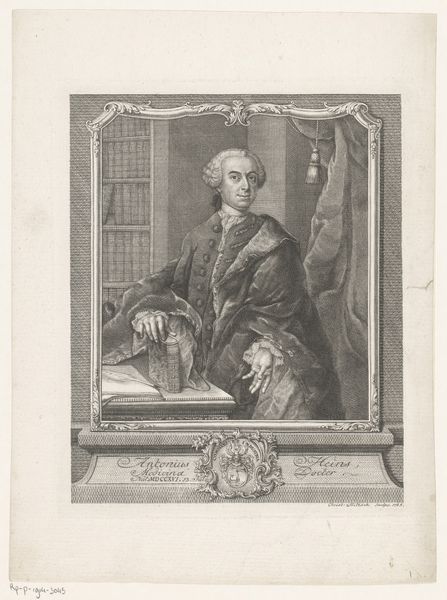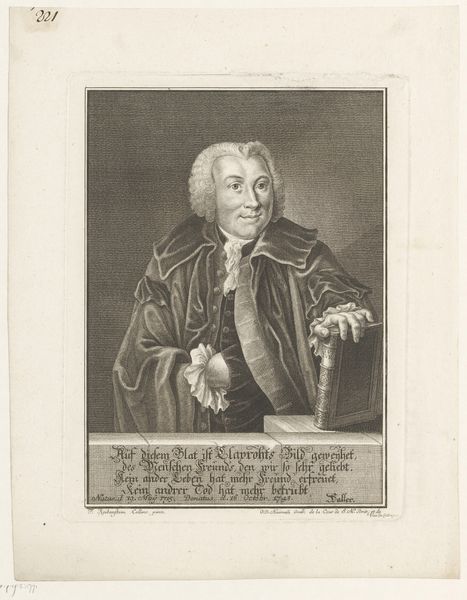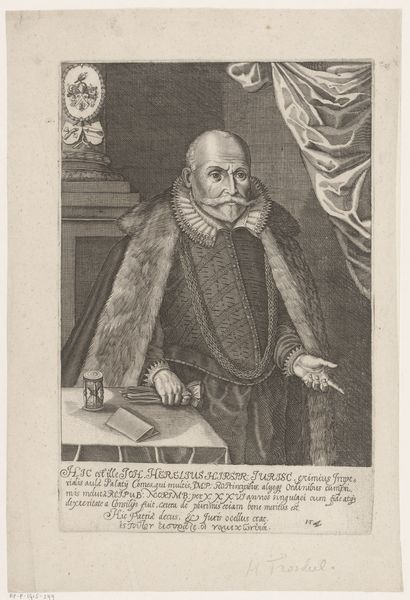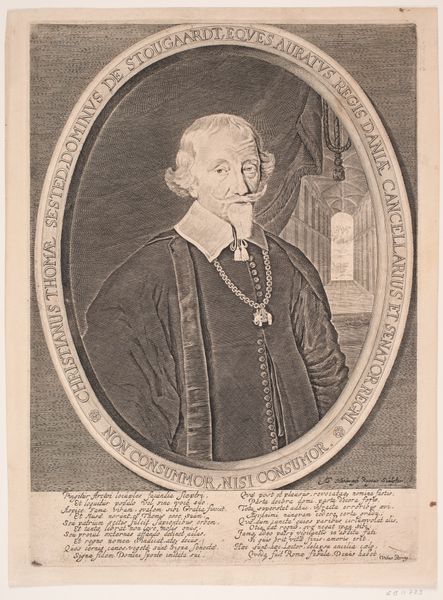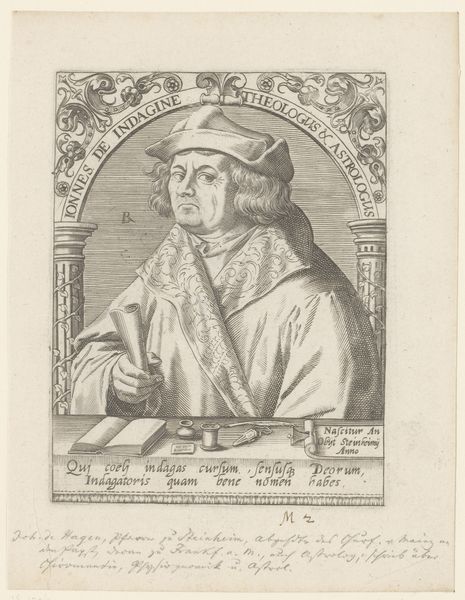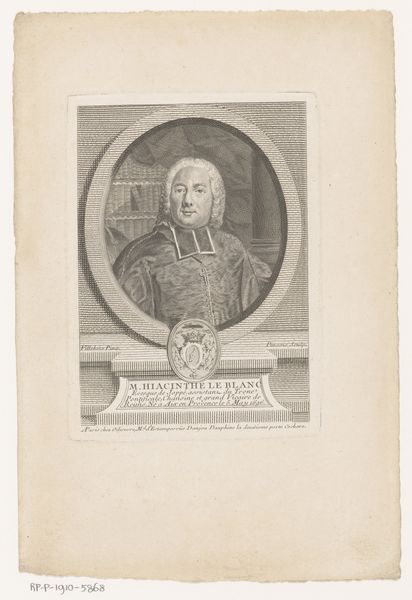
Dimensions: height 177 mm, width 104 mm
Copyright: Rijks Museum: Open Domain
Editor: So, here we have Christian Fritzsch's "Portrait of Anton Heins" from 1764, held at the Rijksmuseum. It's an engraving, giving it this incredible detailed quality. It almost feels staged, very deliberately presenting this figure of importance. What strikes you most about this piece? Curator: What interests me are the material conditions surrounding its creation. Engravings like these were not just about artistry; they were about production. How many of these prints were made? Where were they distributed, and who had access to them? Each strike of the burin on the copperplate represents labor, the artist transforming raw material into something of cultural and perhaps commercial value. What function did it play – propaganda, decoration, or scientific illustration? Editor: So you're seeing the image less as a standalone artwork and more as a commodity? Is the choice of material or the method influential on the social meaning? Curator: Precisely. Consider the intended audience, and how prints such as these functioned within the class system. The accessibility of prints facilitated a broader consumption of imagery beyond painted portraits of the elite. The texture of the line, the scale of production, even the ink used – all contribute to a deeper understanding of 18th-century society and its evolving relationship with images and knowledge. Editor: I see how focusing on the 'how' and 'why' it was made really opens it up. I tend to focus on who the sitter might be or the symbols but knowing the print was potentially widely produced makes it more of a statement than simple decor or personal keepsake. Curator: Absolutely. It makes you wonder about the market forces at play, doesn't it?
Comments
No comments
Be the first to comment and join the conversation on the ultimate creative platform.
